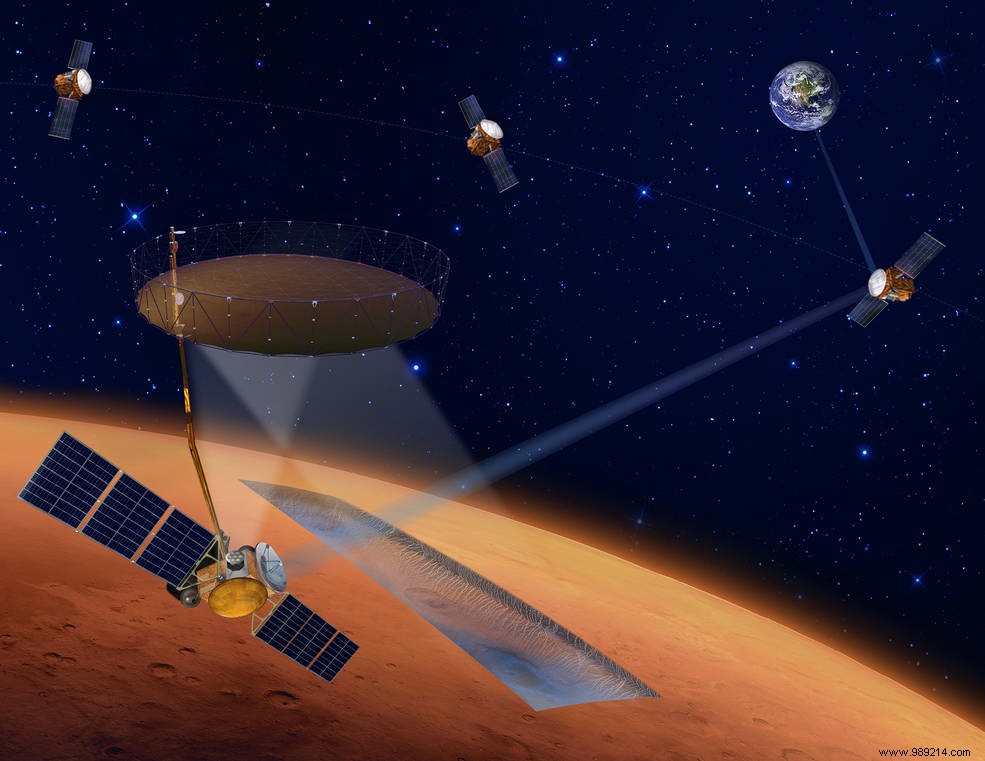The United States Space Agency recently discussed collaboration with three other agencies for the Mars Exploration Ice Mapper. This mission will aim to map the ice that the first astronauts could exploit on the Red Planet.
In July 2020, China launched its long-awaited Tianwen-1 mission to Mars. The main objective of the mission will be to probe the distribution of water ice in the Martian underground. It will also map the geological structure of the planet. However, mapping the ice of Mars is also one of NASA's objectives. In a press release published on February 3, 2021, the US space agency announced the signing of an agreement with three other space agencies. These are the Canadian Space Agency (CSA), the Japanese Aerospace Exploration Agency (JAXA) and the Italian Space Agency (ASI).
The objective of their joint mission, the Mars Exploration Ice Mapper, will be to map exploitable ice deposits in the future by the crews of the first manned missions. As a first step, these four agencies will work together to assess the feasibility of such a mission. However, it is not excluded that other agencies will integrate the project as it progresses.
If the Mars Exploration Ice Mapper mission materializes, it could start in 2026 . Concretely, it will be a question of identifying in advance the locations where the ice deposits are. The information collected will concern the depth of these same deposits, their extent or the abundance of ice by means of a probe in low circular orbit around Mars (see image below). This probe should integrate a radar capable of analyzing the properties of dust and rocks. Indeed, their presence can play a role in the possibility of accessing the ice.

In short, this is a reconnaissance mission for a better knowledge of resources when the first humans set foot on Martian soil. Remember, however, that exploiting the ice of Mars seems to be essential to establishing a base then a colony. Indeed, transporting water from Earth would be far too expensive and would pose unbearable logistical problems.
In addition to considering ice as a resource, the Mars Exploration Ice Mapper mission will have a real scientific interest. NASA evokes the possibility of carrying out core drilling in order to study the ice to answer a specific question:did Mars once harbor a form of microbial life and does it now contain traces of it? Mapping the ice of Mars has another interest:contributing to current knowledge in terms of climatology and geology about this planet.